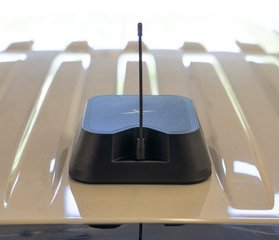Learn how Wi-Fi 6E standard-power transmitters must navigate around public safety and wireless backhaul signals in this video interview with Federated Wireless CTO Kurt Schaubach.
For over two years, we’ve been hearing about how Wi-Fi 6E adds 1200 MHz of needed bandwidth to meet growing needs. The so-called “6 GHz band,” which covers 5.925 to 7.125 GHz, is not without incumbents that need protection.
Protection from a home router pr smartphone? No, we’re talking what’s called standard-power access points such as the recently released AP5050 from Extreme Networks.

Signal protection contours for each microwave signal assure that Wi-Fi 6E signals won’t interfere with incumbents such as wireless backhaul. Image: Federated Wireless.
Unlike CBRS, which uses a sophisticated algorithm to prioritize incumbents when they need use of the frequency, Wi-Fi 6E access points (APs) need to know the locations, protection contours, and power levels of the incumbents. Those incumbents have, for the most part, fixed locations and are used for public safety and wireless backhaul. The APs use Automated Frequency Coordination (AFC) to check for local incumbents through a cloud-based database. “There are hundreds of thousands of wireless backhaul links in use today,” said Federated Wireless CTO Kurt Schaubach in the video.
In the video interview, Schaubach explains that incumbents also have fixed locations, which differs from the U.S. Navy in the CBRS band. Furthermore, the incumbents have known signal contours and are generally located at heights above what will become the “noise” from Wi-Fi 6E users. Given those known contours and locations, the AFC in standard-power APs can, according to Schaubach, direct their signal beams away from those of the incumbents, minimizing if not eliminating interference. The AFC checks with the FCFC-hosed database once a day to see if any new local “incumbents” have come online.













Leave a comment